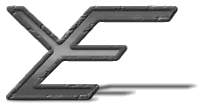Some other common website faults are:
* Web sites/pages that only have contact details to be contacted for more information. It is a better idea to supply the information on the web page along with contact details, so that people can access the information, and then follow up with contact if further contact is necessary.
* Pages that require you to fill in a form before they will post, email or otherwise contact you with information that can readily be displayed on their web page
* Pages that have a lot of fluff, and/or little or no content/information.
* Pages that are over laden with graphics or scripts (most users are still connected by modem. In the USA 49.9% are connected but only 6% have a broadband connection, in the UK 31.2% are connected but only 1% have a broadband connection [NetValue 2000] and even those that do have a broadband connection, may want to see the page quickly, as they don't have the time to wait around). Although the numbers with faster connections has increased, there is still a significant number of people on slower dial up connections.
* Pages that require the use of graphics/JavaScript/etc, or only display on the latest web browser (This can be annoying for the average user who is browsing, but can be discriminating for those with disabilities. For example if the web site is only accessible with graphics, a blind person can't use it. Web sites that able-bodied people have trouble accessing, can be even worse for those with disabilities).
If a company can avoid most of the common faults, it demonstrates that they have a good understanding of the Web and the people who use it. When companies have a good understanding of the Web and the people who visit their site it is much easier to create a site that will meet the needs of the visitors and entice them to come back. It is always a good sign to have most visitors as repeat visitors, as they already know the site and have an idea of whom you are which makes it easier to achieve the aim of the site. Unfortunately it is very easy to get led off in another direction by nice "eye-candy", rather than following the main aim for the site. This is bad for both web site developers, because it is unproductive work, and it is bad for the visitors, as it provides a distraction from the reason that they have come. Also another downside to "eye-candy" is that often, specific browsers and/or plug-ins are required to display it, which means that it can easily destroy the usability of the site for most other users. Generally if a company reaches this point they will have put together a small group that takes responsibility for the corporate web site, and will keep it updated and expanding. Generally when companies put a small group together to work on a web site, it is with the understanding that all changes to the web site go through that central group. This leads into the different types of models for web sites, as the One-Many model described above, is not the only model for web sites.
| Previous: | 2.04 Typical websites |
| Next: | 2.06 Relationship models |
